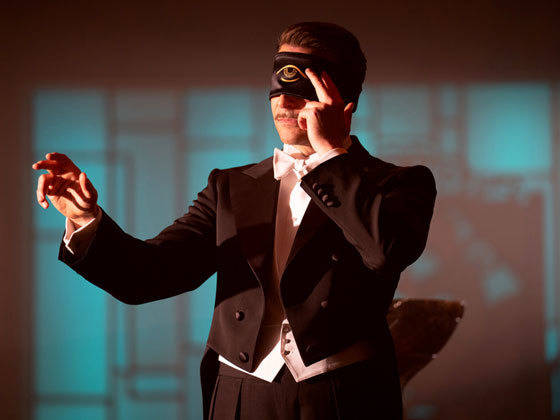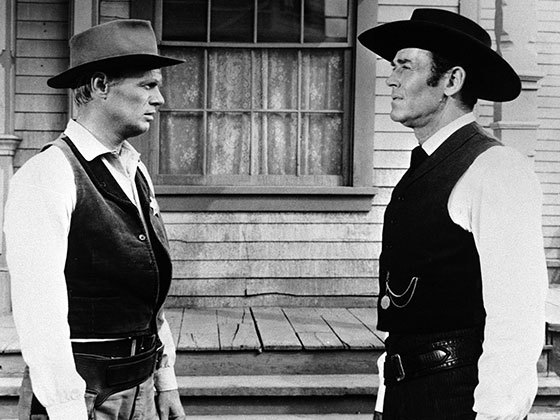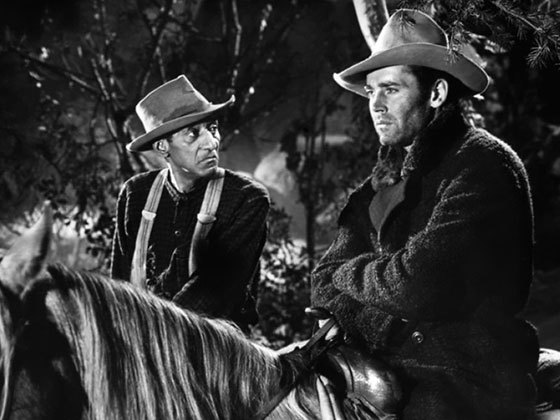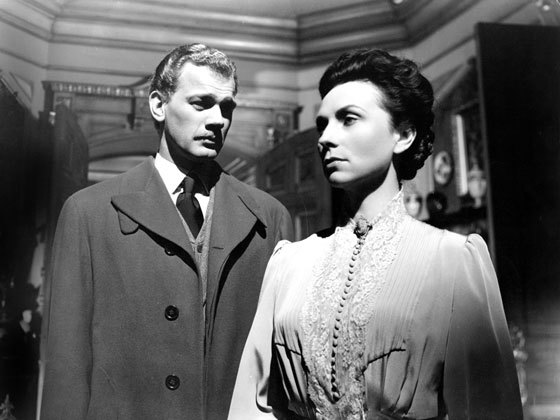By Harold Schechter
The true-crime genre took root in Hollywood relatively late, but filmmakers have found grisly cinematic inspiration in serial killers, homicidal juvenile delinquents, home invasions, and other real-life horrors.
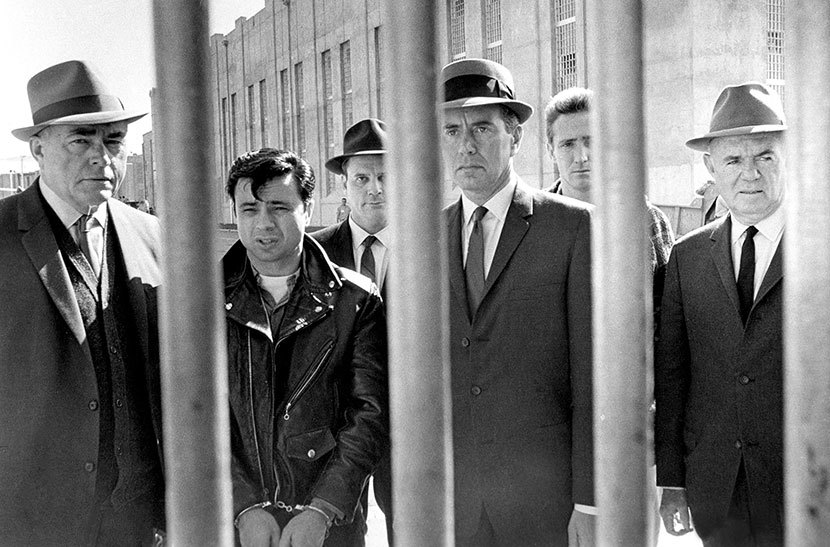
| RELATED BOOK: |
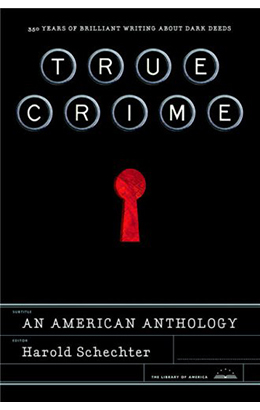 |
| True Crime: An American Anthology |
Crime has been a central subject of American movies since a band of sixgun-wielding desperados, modeled on Butch Cassidy’s Hole-in-the-Wall gang, robbed an express car in Edwin Porter’s 1903 The Great Train Robbery. Nine years later, D. W. Griffith invented the gangster film in The Musketeers of Pig Alley. “True-crime” literature, though, as I wrote in the introduction to True Crime: An American Anthology, tends to exclude professional outlaws like Jesse James or Al Capone: people for whom bumping off an occasional victim is part of the job. While some classic works of true crime have chronicled highwaymen and other bandits (The Newgate Calendar is a prime example), the bulk of the genre focuses on what Victorian tabloids liked to call “horrible murder”: shocking homicides that amaze and titillate communities and transform the perpetrators into monsters of the public imagination. The Unwritten Law (1907), which recreated Harry K. Thaw’s murder of his wife’s former lover, the celebrated architect Stanford White, is probably the first true-crime film. The genre didn’t take root in Hollywood, though, until the 1950s. The following movies potently dramatize some of the most notorious American murders of the twentieth century.
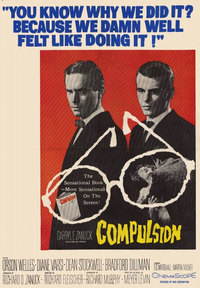
Compulsion (1959). Directed by Richard Fleischer. Written by Richard Murphy. With Dean Stockwell, Bradford Dillman, Orson Welles, Diane Varsi, E. G. Marshall, and Martin Milner.
Buy the DVD • Stream on Amazon
In May 1924, two arrogant young men, Nathan Leopold and Richard Loeb, the scions of prominent Chicago families, committed a murder so sensational that it would come to be as closely identified with the 1920s as flappers and bathtub gin. Conceiving of themselves as Nietzschean supermen, they set out to commit “the perfect crime.” Choosing a victim at random—a fourteen-year-old acquaintance named Bobby Frank—they lured him into their car and, after fatally bludgeoning him, disfigured his corpse with hydrochloric acid and stuffed it naked into a drainpipe at the bottom of a remote railroad embankment. The trial of these two Jazz Age “thrill killers” became the media event of the day. Covering the case for the University of Chicago newspaper was student journalist Meyer Levin, a classmate of the killers. Thirty years later, Levin transformed his reporting into his best-selling “documentary novel,” Compulsion, a precursor of Truman Capote’s “nonfiction novel,” In Cold Blood.
Compulsion is one of three theatrical features based on the Leopold-Loeb case. (The others are Alfred Hitchcock’s technically audacious 1948 movie Rope, filmed in ten shots edited to seem like one, and Tom Kalin’s 1992 “Gay New Wave” film, Swoon.) The director of Compulsion, Richard Fleischer, was a prolific craftsman of unpretentious entertainments in virtually every Hollywood genre, including film noir (The Narrow Margin), the medieval epic (The Vikings), and science fiction (Fantastic Voyage). But from The Girl in the Red Velvet Swing (1955), a remake of The Unwritten Law, to The Boston Strangler (1968) and 10 Rillington Place (1971), true crime was a Fleischer specialty. Compulsion is a tense black-and-white thriller that avoids sensationalism. The ghastly murder is never shown. Bradford Dillman and Dean Stockwell star as Artie Straus and Judd Steiner, such barely disguised versions of their real-life counterparts that Nathan Leopold sued both Meyer Levin and producer Richard D. Zanuck for violation of privacy. Despite the constraints of Hollywood’s Production Code, the actors manage to convey the erotic hold that the swaggering sociopath Artie exerts over his slavish confederate. As the rumpled Clarence Darrow surrogate, Jonathan Wilk, Orson Welles delivers a moving rendition of the closing speech that saved the young defendants’ lives, while E. G. Marshall is suitably sharkish as the state’s attorney out for their blood.
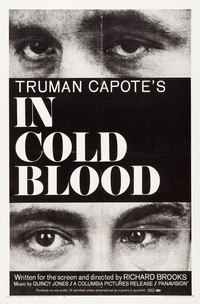
In Cold Blood (1967). Directed and written by Richard Brooks. With Robert Blake, Scott Wilson, John Forsythe, Paul Stewart, Gerald S. O’Loughlin, and Jeff Corey.
Buy the Criterion Blu-ray • Buy the Criterion DVD • Stream on Amazon
The 1959 slaughter of the four-member Clutter family in the tiny Kansas farming community of Holcomb was barely noted outside the Midwest. The New York Times covered it in a three-hundred-word item buried on page 39. That was enough to catch the eye of Truman Capote, then best known as the author of Breakfast at Tiffany’s. Capote had been considering writing a book about homicide because (as he told George Plimpton) “murder was a theme not likely to darken and yellow with time.” Taking the Clutter killings as his subject, he eventually produced his 1965 bestseller In Cold Blood, a phenomenal success that elevated the previously disreputable genre of true crime into the realm of serious literature, while generating heated controversy that persists to this day.
Filmed at the site of the actual murders and shot in the lurid black-and-white of a Weegee crime scene photograph, In Cold Blood succeeds as both a quasi-documentary reconstruction of the Clutter family massacre and an electrifying adaptation of Capote’s masterpiece. Following the structure of the book, the movie strikes a contrast between the victims’ Norman Rockwell home-life and the rootless, marginalized world of the killers. The central section, a gripping procedural with John Forsythe as Capote’s clean-cut hero, Alvin Dewey, culminates in the arrest of the suspects and the harrowing recreation of the murders. Scott Wilson shines as Dick Hickock, the instigator of the crime, a textbook psychopath with the smooth-talking charm of his breed. Still, the film’s writer-director, Richard Brooks, lavishes most of his attention on Hickock’s damaged, soulful, scarily unstable partner, Perry Smith, just as Capote did. Former child actor Robert Blake, who bore an uncanny resemblance to Smith, plays him brilliantly. Brooks, a filmmaker prone to pompous moralizing (Blackboard Jungle, Looking for Mr. Goodbar), largely suppresses that tendency here, though he can’t resist sticking in a fictitious journalist to mouth a bunch of liberal pieties—the only significant defect in this otherwise admirable film.
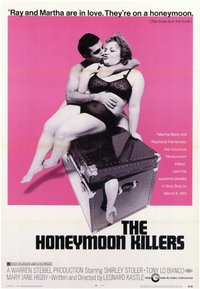
The Honeymoon Killers (1969). Directed and written by Leonard Kastle. With Shirley Stoler, Tony Lo Bianco, Mary Jane Higby, Doris Roberts, Kip McArdle, Marilyn Chris, Dortha Duckworth, and Barbara Cason.
Buy the Criterion Blu-ray • Buy the Criterion DVD
Stream on Amazon • Stream on Vudu
In 1947, Martha Beck—a morbidly obese nurse with a checkered sexual history—placed an ad with a lonely hearts club that caught the eye of Raymond Fernandez, a sociopathic gigolo who believed he possessed occult power over women. The two became not only lovers but also partners in a tawdry crime spree. With Beck posing as his sister, Fernandez worked his oily charm on a string of desperate women he met through various matrimonial services, then absconded with their valuables. Eventually, the duo progressed to serial murder. In January, 1949, seized by jealous rage after finding her boyfriend in bed with his latest victim—an elderly widow named Janet Fay—Beck cracked the old woman’s skull with a ball-peen hammer. Fernandez then finished Fay off by garroting her with a scarf. Arrested soon after their next appalling crimes—the murders of a widow and her two-year-old daughter—the “Lonely Hearts Killers” became the center of a tabloid circus. Convicted of first-degree murder, they were executed on the same day in March, 1951. Beck persisted in seeing her affair with Fernandez as a storybook romance, proclaiming her devotion to her loathsome lover-boy even as she was led to the chair.
A thirty-nine-year-old opera composer named Leonard Kastle brought this grotesque pair to the screen eighteen years later in The Honeymoon Killers. Kastle wrote the script and took over the direction when twenty-seven-year-old Martin Scorsese was fired for being too “artistic.” Though distributors promoted the movie as crude exploitation, reviewers recognized it as a minor masterpiece and François Truffaut called it his “favorite American film.” When she first chugs onscreen as Beck, Shirley Stoler, decked out in starched white uniform and cap, suggests nothing so much as Divine in the role of Nurse Ratched. In his motion picture debut, Tony Lo Bianco exudes a sleazy charisma as Fernandez that makes his sexual hold on her persuasive. The supporting cast is outstanding, especially Mary Jane Higby as Janet Fay, portrayed here as a fatuous biddy so supremely annoying you’re amazed at how long it takes for Martha Beck to reach for a ball-peen hammer. Shot on the cheap in grainy black-and-white, The Honeymoon Killers renders several atrocities with an unvarnished brutality—the antithesis of the stylized ultra-violence in Bonnie and Clyde and The Wild Bunch. The movie plunges audiences into an unspeakably seedy world from which they emerge feeling appropriately unclean.
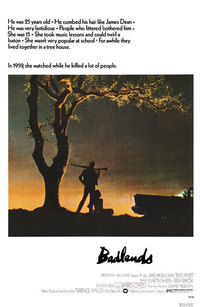
Badlands (1973). Produced, written, and directed by Terrence Malick. With Martin Sheen, Sissy Spacek, Warren Oates, Ramon Bieri, and Alan Vint.
Buy the Criterion Blu-ray • Buy the Criterion DVD • Stream on Amazon
Stream on Vudu
In the 1950s, juvenile delinquency ranked higher on some polls of public concerns than open-air atom bomb testing—and two thrill-hungry teens went on a murder spree that seemed to confirm the culture’s worst fears. On December 1, 1957, Charles “Little Red” Starkweather, a sociopath who viewed himself as a James Dean-like rebel, held up a gas station outside Lincoln, Nebraska, then executed the attendant. Seven weeks later, Charlie showed up at the home of his underage girlfriend, fourteen-year-old Caril Ann Fugate, dispatched her mother and stepfather with a hunting rifle, and stabbed her two-year-old half sister to death. After stashing the corpses in the outbuildings behind the house, Charlie and Caril posted a warning on the door—“Stay away. Everybody is sick with the flu”—before settling down for a six-day idyll of TV, junk food, and sex. When relatives grew suspicious, the two hit the road in Charlie’s jalopy. In a week-long rampage that set off a regional panic, Charlie, with Caril at his side, gunned down a seventy-year-old farmer, kidnapped and murdered a high-school couple, slaughtered a wealthy businessman in his home, along with his wife and their maid, and killed a traveling salesman in a car-jacking. Captured after a high-speed chase, Charlie was tried and condemned to the chair. Caril, sentenced to life, was paroled after seventeen-and-a-half years.
Fitting roughly into the doomed-young-lovers-on-the-lam genre (You Only Live Once, They Live By Night), the Starkweather-Fugate saga inspired a number of films, from the cheap 1963 shocker The Sadist, about a teenage psycho-couple who terrorize a trio of schoolteachers, to Oliver Stone’s hyper-violent and cartoonish Natural Born Killers (1994). By far the finest—and the one that sticks closest to the facts—is Terrence Malick’s remarkable first film, Badlands. Martin Sheen (thirty-three at the time, though easily passing for twenty) plays the Starkweather stand-in, Kit Carruthers. Sissy Spacek is his baton-twirling steady, Holly Sargis, a freckle-faced schoolgirl whose sensibility, conveyed in a trademark Malickian voiceover, is shaped by true romance pulp magazines. Kit casually slaughters a string of innocent victims, while Holly hovers nearby, an impassive eyewitness. Yet Malick suffuses the Midwestern landscape with a fairy-tale lyricism. For all its evocative period details, the film expresses more about the age that produced it than the time in which it’s set. Though its beauty seems at odds with the ugliness of its violence, the incongruity mirrors both the dissociated mindset of its protagonists—a pair of alienated losers who see themselves as stars of a glamorous love story—and the schizoid soul of Vietnam-era America.
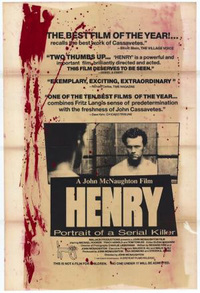
Henry: Portrait of a Serial Killer (1986). Directed by John McNaughton. Written by Richard Fire and John McNaughton. With Michael Rooker, Tom Towles, and Tracy Arnold.
Buy the Blu-ray • Buy the DVD
Subjected to hideous abuse by his prostitute mother, Henry Lee Lucas stabbed her to death during a drunken argument when he was fourteen, and spent ten years in a state hospital for the criminally insane. He then attempted to abduct three teenage girls at gunpoint. Soon after completing a five-year prison term for that crime in 1975, he crossed paths with Ottis Toole, a snaggle-toothed degenerate who shared Lucas’s penchant for serial sex-murder. For the next seven years, the pair drifted around the country, perpetrating an indeterminate number of homicides. They were often accompanied by Toole’s preadolescent niece, Frieda “Becky” Powell, who became Lucas’s lover and common-law wife, and ultimately another dismembered victim. Arrested in 1983, Lucas confessed that he killed hundreds of women in twenty-seven states. Though he eventually recanted, a Texas jury found him guilty of eleven counts of homicide.
Based on Lucas’s confession, John McNaughton’s micro-budgeted directorial debut offers the aesthetic antithesis of Malick’s ravishing Badlands. Henry looks as flat as a fly-on-the-wall documentary and generates an atmosphere of queasy, unrelenting dread. In realistic contrast to standard Hollywood serial killers—diabolical masterminds or quasi-supernatural demons—the two main characters in Henry are perverted, cunning sleazeballs. Michael Rooker’s skillfully bland and dead-eyed performance makes Henry more terrifying than any chainsaw-wielding, hockey-masked slasher. Tom Towles is unspeakably repulsive as his roommate and general partner in atrocity (renamed Otis for the film). Notorious for its raw scenes of appalling violence, such as the psychopaths videotaping their slaughter of an entire family, Henry: Portrait of a Serial Killer earns its reputation as one of the most disturbing movies ever made.
Harold Schechter is a novelist and true-crime historian, the editor of True Crime: An American Anthology and a professor of American literature at Queens College, the City University of New York.
